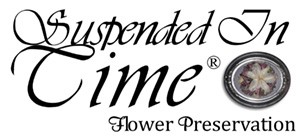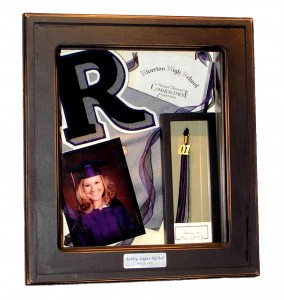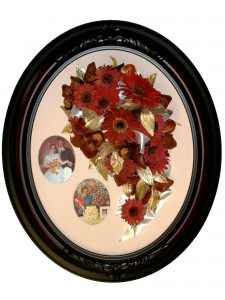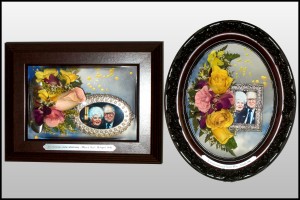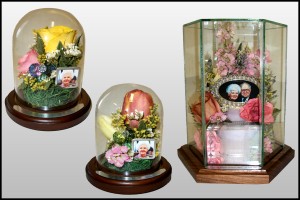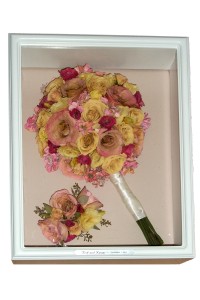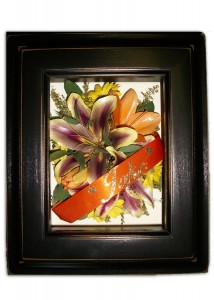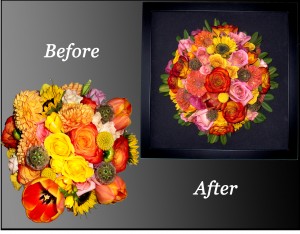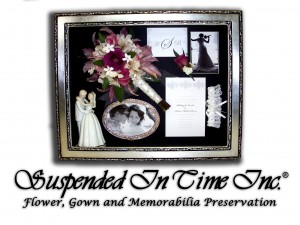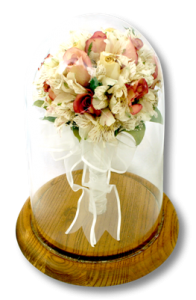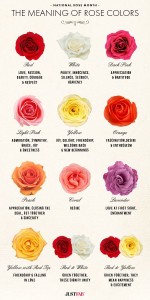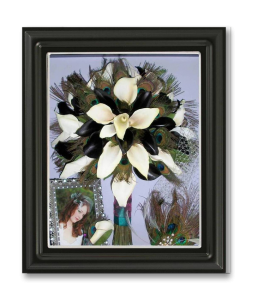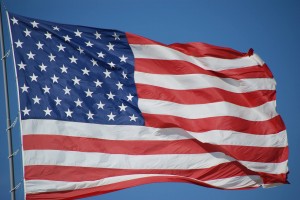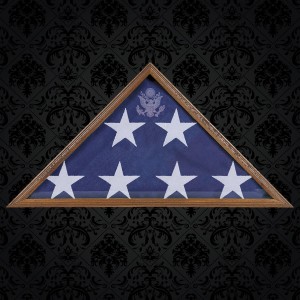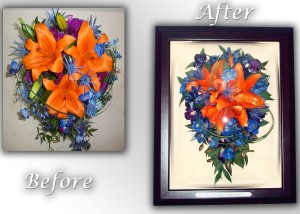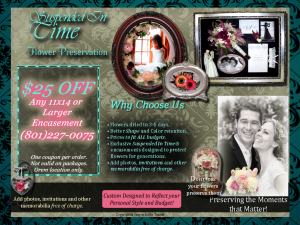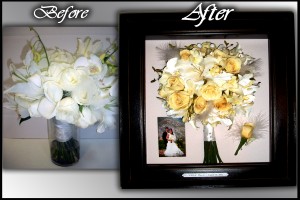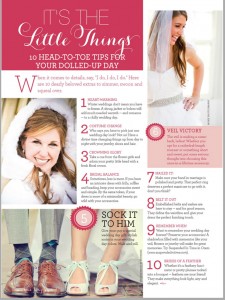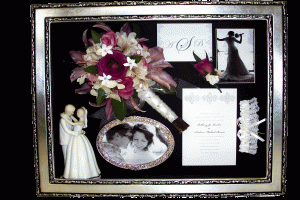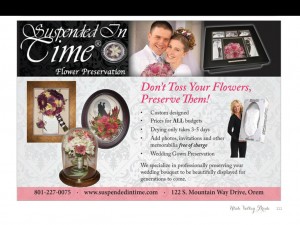Picture yourself walking through a glorious garden with every flower at its peak. Which flowers would you pick for your wedding? The commonplace? The colorful? The rarest? Most fragrant? Unscented? Having trouble deciding from the thousands of varieties available? To help you narrow down your bouquet and centerpiece choices before you meet with your florist, we offer this overview of the top 10 most popular wedding flowers.
1. The Rose
Long considered a symbol of beauty and love, the rose figures into many myths and fairy tales. Romantic writers and poets have used the flower as a metaphor for emotion, beauty, passion, and true love throughout the ages. An all-star in the world of weddings, the rose is far from boring, particularly when it comes to color — the rose is available in solid colors and bicolor varieties, and there are striped roses and tipped roses as well. More than three thousand varieties of roses are grown commercially, many available year-round and that are surprisingly affordable. And though roses are associated with luxurious fragrance, not every rose is scented. Three main types are likely candidates for your wedding flowers: hybrid tea roses (the classic, uniformly-shaped commercial roses generally seen at your local florist), spray roses (a rose with five to 10 small heads on each stem and a “natural, garden-grown” look), and garden roses (expensive, old-fashioned varieties with bushy, open heads and delicious scents).
Learn more about roses — the quintessential wedding flower!
2. The Tulip
Although it’s most often associated with the Netherlands, this flower is actually a native of Persia. Representing “consuming love” and “happy years,” the tulip can be a meaningful wedding choice. The flowers are grown in a wide range of colors, including white and cream; pastels like pink, yellow, and peach; and vibrant hues like magenta, red, and purple. Available during much of the year, the most common tulips are very affordable, though rare varieties can be expensive. The versatile tulip can enhance both elegant wedding settings and more casual venues, and work well in almost any permutation — from bouquets to boutonnieres to table arrangements. Three main varieties are commonly used: Dutch tulips (typically seen at neighborhood florist shops and in gardens), French tulips (expensive and elegant, with extra-long stems and large tapered blooms), and parrot tulips (noted for their ruffled, striped petals in intense colors).
3. Calla Lily
Also known as the arum lily, this elegant, trumpet-shaped blossom originated in Africa and symbolizes “magnificent beauty” in the language of flowers. The calla lily’s distinctive form has been depicted in Art Nouveau and Art Deco works, in addition to twentieth-century photography. Two types are commonly available: a large-headed variety with a long, smooth stem and suitable for tall arrangements or presentation-style bouquets, and a miniature version ideal for nosegays and boutonnieres. Creamy ivory is the most popular color, but calla lilies also come in yellow, orange, mauve-pink, and dark purple.
4. Lily of the Valley
With bell-shape florets dangling from a thin stem, the lily of the valley is sometimes called “the ladder to heaven.” The fresh, perfumed scent from its tiny flowers is unmistakable. In Norse mythology, the flower is linked to Ostara, the goddess of springtime, and while most plentiful during this season, it remains available — and very expensive — most of the year. So while a fistful of lily of the valley might be your dream, a more affordable alternative may be to use just a few stems to infuse a bouquet or centerpiece with its wonderful fragrance. Most people know of the white variety, but lily of the valley also comes in a very rare rosy-pink.
5. Hydrangeas
With its big bushy head and intense shades of pink, blue, burgundy, and purple, it’s no wonder that the hydrangea represented “vanity” in the Victorian language of flowers. One of the most popular varieties changes in color as it grows from bubble-gum pink to sky blue, depending on the acid level of the soil. A stem or two of this moderately priced, scentless shrub flower helps fill out arrangements and bouquets, and a few sprigs make a charming boutonniere. You’ll find the hydrangea in white and shades of green, pink, burgundy, and blue.
6. The Peony
The peony has a large, full head, strong perfume, and bright color. But despite this outward showiness, the flower acquired the Victorian meaning “bashfulness.” Cultivated in Asia for more than a thousand years and developed further by the French, the peony is available in two main types, the herbaceous and the tree peony (the latter’s flowers do not last as long when cut). A bouquet made solely of peonies can be gorgeous; the flower can also be used to create beautiful centerpieces and arrangements. Grown in single- and double-flower styles, this expensive bloom is seasonally available from late spring to early summer but can be imported in the fall.
7. Ranunculus
Looking for a cost-effective alternative to roses or peonies? Try the lush, multi-petaled ranunculus, a relative of the buttercup. First seen by Westerners in the Far East around the thirteenth century, this mild-scented flower features several blossoms on a stem with fernlike foliage. To carry ranunculus is to tell your partner, in the Victorian language of flowers, “I am dazzled by your charms.” A natural for the bridal bouquet or bridesmaid nosegays, the ranunculus also makes a whimsical boutonniere and is available in many colors including white, yellow, orange, and pink.
8. Stephanotis
The Victorian meaning for this flower is “marital happiness,” making the dainty white Stephanotis an obvious choice for weddings. The star-shape, waxy florets actually grow on a flowering vine; each must be individually wired or placed onto a special holder before it can be arranged. A bouquet of stephanotis blossoms is one of the most traditional a bride can carry, and a stephanotis boutonniere is a classic choice for a formal wedding. Mildly scented, moderately priced, and available year-round.
9. Sweet Peas
The sweet pea, which signifies “lasting pleasure,” was first brought to England from Sicily in 1699, and the English have had a love affair with this delicate flower ever since. Its candy-like scent and ruffled blossoms make this an old-fashioned favorite in bouquets for the bride and her bridesmaids. The sweet pea’s many colors range from white to intense pinks and purples, and its scent can be strong and sweet.
10. The Gardenia
Surrounded by dark green, waxy leaves, the exquisite gardenia exudes a sultry, heavy scent. It was this intoxicating fragrance that captivated an English sea captain traveling through South Africa in 1754, prompting him to bring home one of the native plants as a souvenir. Gardenias are lovely tucked into a bouquet or floating in a low bowl as a centerpiece, and a single gardenia makes a wonderful scented corsage. But be gentle: the delicate, creamy ivory petals of this expensive flower can bruise easily. Large three- to four-inch blossoms, as well as a miniature variety, are available.
Adapted from The Knot Book of Wedding Flowers (Chronicle Books, 2002).
— The Knot
https://wedding.theknot.com/wedding-planning/wedding-flowers/articles/top-10-wedding-flowers.aspx
